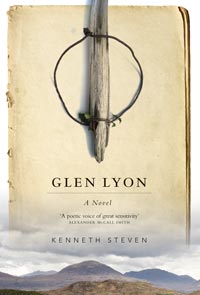
As a story, it grows organically like a tree, and you see the rings in the tree without the tree of the story being broken. There is no sense of an artificial plot driving the story; it follows the seasons of the year, and these become the seasons of life. As I began to read
Glen Lyon, I felt I had been given a piece of myself that I didn’t understand, but that if I kept reading, the words and the story of the book would begin to carve out from that piece of myself something precious that I needed to know.
The book is set in Scotland, where Somerled Stewart and Anna meet and fall in love. He makes a ring for her from gold he has panned by the falls in the glen. He fashions his living by carving. He sees shapes hidden in the driftwood; this is his real craft, but he has to make his money selling cheap carvings from cheap wood.
The paper of the novel drips with the blood, pain and fire of a creative desire that is not seen or appreciated. The smouldering anger of the rejection of his work in the present is echoed in the undersong of his past, which returns to haunt Somerled as his sister comes back into his life.
The land mirrors the feelings, and these wash through you with their rawness: ice, sharp edges, stone walls, fragments of gold and warmth and blue sky and hayfields of sun. Buried things come back as threatening forces, as shadows, some that come and stay, and others that come and go. You fear the cold, loveless heart that kills as if it could step into your life, and you hope for the brave heart that tries to carve its own self into a new shape for the other who is loved.
As the story develops, you feel the pressure building; you sense the blocked paths, the rubble, the buried things that can silence the love struggling out of the ground like snowdrops. There are real ghosts and the frightening power and threat of a curse, the fragility of new life in baby and in adult.
The shadows of the past are faced like giant waves that come near. Not all will make it through the wave.
There is a clear perceiving in the writing, just as there is in the carving of sleeping forms from ancient wood. When I get to the end of the book I see the part of myself I was given at the beginning, and it has been carved from something bitter into something better. I, too, have travelled from autumn, through the bitterness of winter, into the hope of spring and summer.